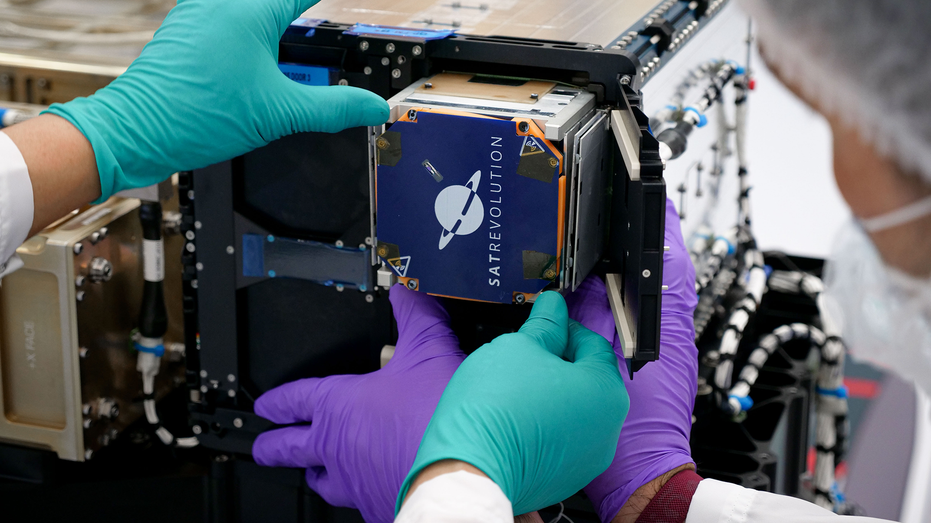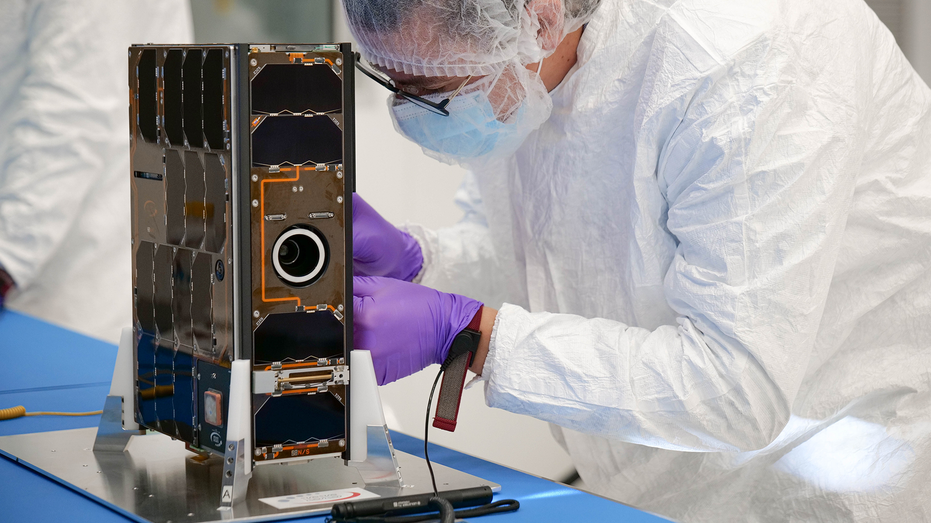Virgin Orbit pegs next launch date
Virgin Orbit's rocket, LauncherOne, has been shipped to Mojave Air and Space Port in California where final preparations are underway
Bezos putting his reputation, money, risk on the line with space flight: Michio Kaku
Theoretical physicist and author Michio Kaku on Jeff Bezos and space tourism.
Richard Branson's Virgin Orbit announced Tuesday that its upcoming orbital mission, dubbed "Tubular Bells, Part One" after the first album recorded by Virgin Records, is on track to launch in the last week of June. The satellite launch service said that its rocket, LauncherOne, has been shipped to Mojave Air and Space Port in California where final preparations are underway.
Virgin Orbit announced Tuesday that its next orbital mission, dubbed Tubular Bells, Part One, is on track to launch in the last week of June. (Photo courtesy of Virgin Orbit)
Virgin Orbit uses a technique called air launch, in which its 70-foot, 57,000-pound LauncherOne rocket is released at an altitude 35,000 feet from under the wing of a 747-400 jet aircraft, dubbed Cosmic Girl, rather than from a traditional launch pad on the ground.
After a 4-second freefall, LauncherOne's first stage engine ignites, accelerating the rocket to approximately 8,000 miles per hour. From there, the second stage engine kicks in, taking LauncherOne to a maximum speed of 17,500 miles per hour.
In addition to improving the payload capacity of the rocket, the technique allows LauncherOne to fly on short notice and from a wide variety of locations.
VIRGIN GALACTIC INVESTORS CHEER SPACE FLIGHT SUCCESS
Last week, Virgin Orbit conducted a successful cryoload test, where LauncherOne was filled with liquid oxygen propellant and fully pressurized to flight-like levels.
"During this test, we were able to achieve all of our planned objectives, including 100% LOX and fuel fill and nominal pressurization of all high-pressure gas systems with no tank leakage," the company said in a statement.
Virgin Orbit will now move forward with a "wet dress rehearsal", where it will run through all combined launch operations up until takeoff.
"If all looks good, we’ll be in the clear to push forward and commit to launch," the company added.
GET FOX BUSINESS ON THE GO BY CLICKING HERE
LauncherOne's payload will include satellites from the U.S. Department of Defense's Space Test Program, SatRevolution, and the Royal Netherlands Air Force.
The Department of Defense is launching three cube satellites as part of the program's Rapid Agile Launch (RALI) Initiative. SatRevolution is launching two optical satellites, STORK-4 and STORK-5, as part of a 14-satellite STORK constellation.

SatRevolution’s STORK-4 satellite being inserted into its dispenser. (Photo courtesy of Virgin Orbit)
The Royal Netherlands Air Force is launching the country's first military cube satellite known as BRIK II, which was built and integrated by Innovative Solutions in Space, with contributions from the University of Oslo, the Delft University of Technology, and Royal Netherlands Aerospace Centre.

The Royal Netherland Air Force’s BRIK-II satellite undergoes a final inspection prior to integration. (Photo courtesy of Virgin Orbit)
"We’ll be sending that integrated payload stack up to Mojave to join the rest of the system very soon," Virgin Orbit said.
CLICK HERE TO READ MORE ON FOX BUSINESS
The latest mission comes after LauncherOne's second successful launch demonstration in January. During the demonstration, Cosmic Girl flew out to a launch site over the Pacific Ocean, about 50 miles south of the Channel Islands.
LauncherOne was then released from the aircraft, where the two-stage rocket ignited and blasted into orbit. At the conclusion of the flight, LauncherOne deployed a payload of 10 satellites selected by NASA's Launch Services Program as part of the agency’s CubeSat Launch Initiative (CSLI). Nearly all of the satellites were designed, built and tested by universities across the U.S., including Brigham Young University, the University of Michigan and the University of Louisiana at Lafayette.
The flight marked the first time an orbital class, air-launched, liquid-fueled rocket successfully reached space, according to Virgin Orbit.























